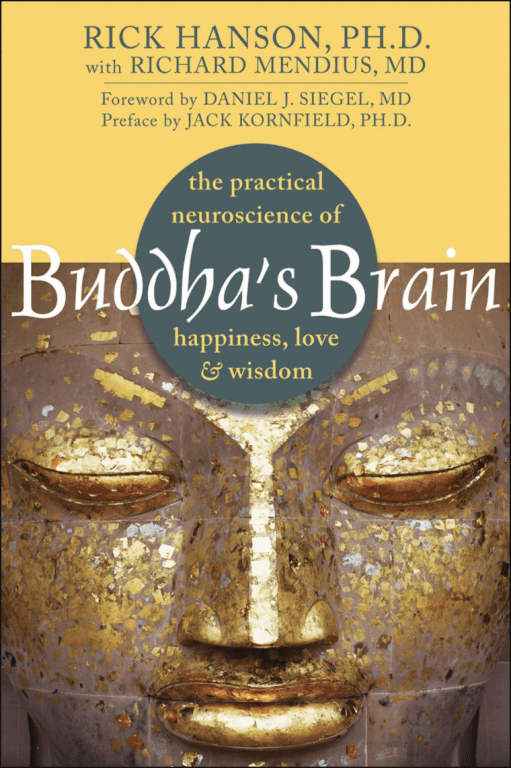There are a lot of scary headlines out there. And even though we can’t control the state of the world, I would like to invite us to spend a little time reflecting on what we do have more influence over: how we respond to frightening news.
A simple framework that has stuck with me in recent years is fr om the psychologist Rick Hanson. (Some of you may know his books, like Buddha’s Brain.) For now, imagine you are sitting in a car at a stop light: green means go and red means stop. Dr. Hanson has adapted that color coding for noticing what’s happening with the state of our minds (Hardwiring Happiness, 50).
om the psychologist Rick Hanson. (Some of you may know his books, like Buddha’s Brain.) For now, imagine you are sitting in a car at a stop light: green means go and red means stop. Dr. Hanson has adapted that color coding for noticing what’s happening with the state of our minds (Hardwiring Happiness, 50).
When we feel safe, centered, and connected, it’s easier to skillfully respond to any problem that arises. When we’re relaxed and open, we are more able to be creative—and draw from our full set of inner resources, allowing the best versions of our self to emerge. That’s what Dr. Hanson calls “green” Responsive Mode. In contrast, when we feel threatened, anxious, or discombobulated, it can be easy to downshift into “red” Reactive Mode, and lash out at anything that triggers us.
To get a little nerdy about it, when we’re in “red” Reactive Mode, our amygdala (those two almond-shaped clusters of densely packed neurons in the temporal lobes of our brains) has taken over. The amygdala controls instinctual responses, and has been called the “fight or flight”—the “have-sex-with-it-or-kill-it”—part of the brain (Evolving Dharma, 35-36). When we are in “red” Reactive Mode, we’re acting primarily on base animal instinct.
By no means am I saying that we should get rid of our amygdala. This evolutionary inheritance can save our life in a high-threat situation. But it can also cause us to exist in a state of ratcheted-up anxiety all the time. When we are in “red” Reactive Mode, our “lizard brain”—our brain stem—takes over, and we don’t have access to all those more evolved parts of ourselves that the prefrontal cortex part of our brain makes possible: compassion, clarity, concentration, equanimity, and so much more.
So if you are finding yourself spending too much time in a ratcheted up “red” Reactive Mode, take a deep breath: in…and out. Take another one. Offer yourself some gentleness, kindness, and compassion. You’ve been going through a lot. We’ve been going through a lot. I invite you to notice in the coming days:
- What are the people, places, things, and activities that most regularly incline your heart and mind toward “green” Responsive Mode?
- And what are the people, places, things, and activities that most regularly incline your heart and mind toward “red” Reactive Mode?
You may not be able to eliminate all of those “red” stressors from your life, especially in such a time as this. But can you be intentional about getting more of the “green” people, places, things, and activities in your life—so that when the “red” stressors do arise, you have a greater capacity to remain in Responsive Mode?
Sometimes, as we did just a few moments ago, it can be as simple as taking a deep breath, and placing your hand on your heart and inclining yourself back toward heartfulness. Here’s a quote from the meditation teacher Jack Kornfield: “Tune in to your heart. That is where love, wisdom, grace, and compassion reside. With loving attention, feel into what matters most to you. Yes, there are anxious thoughts, and there is grief and trauma, but don’t let your heart be colonized by fear” (“Freedom Amid Challenging Times”).
I love that: “Don’t let you heart be colonized by fear.” Fear will arise, but practice letting it go before it sets up shop and moves in permanently.
Along those lines, I want to leave you with one final practice. It’s been on my mind since everyone’s been talking about zoom so much in regard to Zoom Video Conferences. And while the word zoom can mean to “move really quickly,” it can also mean to “move in and out on a camera from a long shot to a close-up or vice versa.” And it’s that latter sense of zooming in and out on a camera that can be of use when we feel contracted and locked in by fear or anxiety.
When we’re afraid, fear can feel like the only thing in the world. If that’s happening, a significant first step is noticing the fear. Simple mindfulness: noting, “There is fear.” Noticing and naming can give us a little bit of space between being fully caught up and trapped in fear—and witnessing what is happening.
From there, one practice that has been useful for me is inclining my heart and mind toward spaciousness: intentionally zooming out to put my fear in a larger context.
If you are open to it, I will show you what I mean with a short guided meditation adapted from one of my teachers, Emily Horn. (Her full version is ten-minutes, and is available online. The parts directly quoting Emily are in quotation marks below.)
If you feel comfortable, I invite you to settle in a little more right where you are. If it’s possible for you in this moment, I invite you to sit up a little straighter—so that you are relaxed, but alert. Perhaps put your feet on the floor. Rest your hands in your lap. Relax your shoulders. Take a deep breath in and out.
Begin by noticing the spaciousness of the room that you are in. You can even have to your eyes closed, just allow yourself to feel into the experience of sensing that the room that you are in, however large or small, is bigger than you. There is spaciousness.
“And now seeing if you can allow that sense of spaciousness to grow.” Zooming out a little more. “Imagining the sky above you.”
And now zooming out further still, “imagining the expanse of space extending beyond the sky.”
“Whatever is arising in your field of awareness in this moment—body sensations, breathing, feelings, thoughts—allow it all to come and go, just like the clouds in the sky.” As the saying goes, you don’t have to believe everything you think. You don’t have to hold on to everything you feel.
“Awareness holds it all. No need to do anything. Is there a sense that there’s a need to do something? A desire to do something? That too can arise and pass. Within this vast spaciousness of awareness, surrendering in this moment just a little bit more to awareness.”
As you are ready, I invite you to return your attention to the room that you are in—and know that this practice of zooming out and inclining your mind and heart toward spaciousness is always available to you.
The Rev. Dr. Carl Gregg is a certified spiritual director, a D.Min. graduate of San Francisco Theological Seminary, and the minister of the Unitarian Universalist Congregation of Frederick, Maryland. Follow him on Facebook (facebook.com/carlgregg) and Twitter (@carlgregg).
Learn more about Unitarian Universalism: http://www.uua.org/beliefs/principles
















